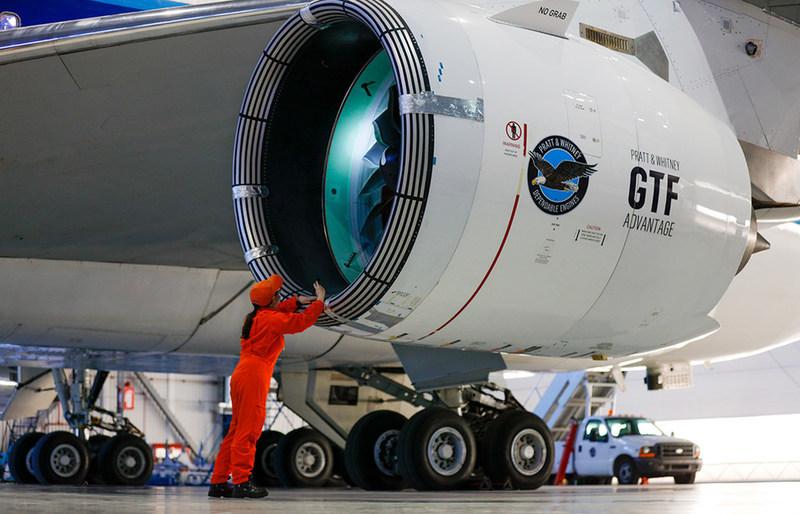Pratt & Whitney Seeing Faster-Than-Expected MRO Recovery, Supply Chain Worries

The narrowbody recovery and cargo boom are finally driving engine MRO to healthy volumes, at least in some regions and for some types. The challenge for engine MRO has shifted from keeping staff and finances intact during the COVID crash to spotting the trends and prospects in markets that are changing quickly—and still very unevenly. Pratt & Whitney (P&W) made good use of the slump in engine shop visits and is now seeing a recovery that is even stronger than it expected.
Unfortunately, supply chain challenges are also topping prior expectations.
Since COVID-19 struck, P&W has been investing in engine health management to ensure it would be ready for the recovery when it happened, explains Arun Srinivasan, associate director, strategy and engine health management. “. . . over the last two years, Pratt & Whitney worked extensively to increase our ability to utilize full flight data from aircraft to increase the services we deliver to our customers,” Srinivasan explains. P&W’s EngineWise aftermarket solutions seek to maximize engine performance and time on-wing while stabilizing MRO spending.
The bright spot in cargo demand generally affected current P&W customers that used its engine health management services. Srinivasan says health management services also enabled new cargo providers to react quickly to increasing demand for flights. The engine OEM has not detected any change in the performance of its engines as they supported new cargo services.
Forecasts did, however, change as the aviation landscape altered quickly. Rob Grossman, P&W’s managing director, commercial serviceable assets, points out that there is always some uncertainty in any forecast. However, he says P&W’s forecasts of demand for used parts have overall been within an acceptable margin for error.
“The added variables introduced during the COVID recovery certainly increased the challenge of forecasting as accurately as pre-COVID,” Grossman acknowledges. In general, P&W’s prediction of shop visit inductions, which drive used part demand, have tended to be slightly lower than actual shop inductions. This, combined with some changes in buying behavior in the engine aftermarket, has caused actual part demand to exceed originally forecasted demand.
“This is a good problem to have,” Grossman argues. “Our Commercial Serviceable Assets team is actively managing our inventories to ensure we meet customer demand as it continues to rise during the recovery.”
The virus hit just as the new generation of more fuel-efficient engines was entering fleets in large numbers, but also with some teething problems. Marc Meredith, executive director, GTF engine aftermarket, says aircraft powered by P&W’s GTFs were often the last to stop flying and the first to return to service, due to their fuel efficiency.
P&W stayed in close touch with GTF operators so it could accurately forecast and schedule MRO, tailoring maintenance strategies to the realities of the pandemic. “For example, with many aircraft inactive during the pandemic, we had a window of opportunity to incorporate planned upgrades into the GTF fleet,” Meredith emphasizes. “Rather than slow down MRO activity, we accelerated upgrades and restored the fleet to full readiness in anticipation of the recovery.”
As the worst of the slump was ending and narrowbodies, at least, were taking to the skies again, P&W unveiled its new GTF Advantage engine. It says the new powerplant for Airbus A320neos reduces fuel consumption by a further 1%, thus decreasing fuel consumption and CO2 emissions by 17%, compared with prior-generation engines. The Advantage will be compatible with 100% sustainable aviation fuel at entry into service, helping to meet the goal of net zero emissions by 2050.
Cost escalation and supply chain problems are a common concern among U.S. companies now—and not just in aviation. P&W says only that “supply chain disruption is being seen across many industries.” The OEM is thus working closely with its suppliers to understand potential bottlenecks while conducting health audits of itself and its own suppliers. Constant contact and engagement, it says, will be the keys to understanding challenges and setting future strategies.





